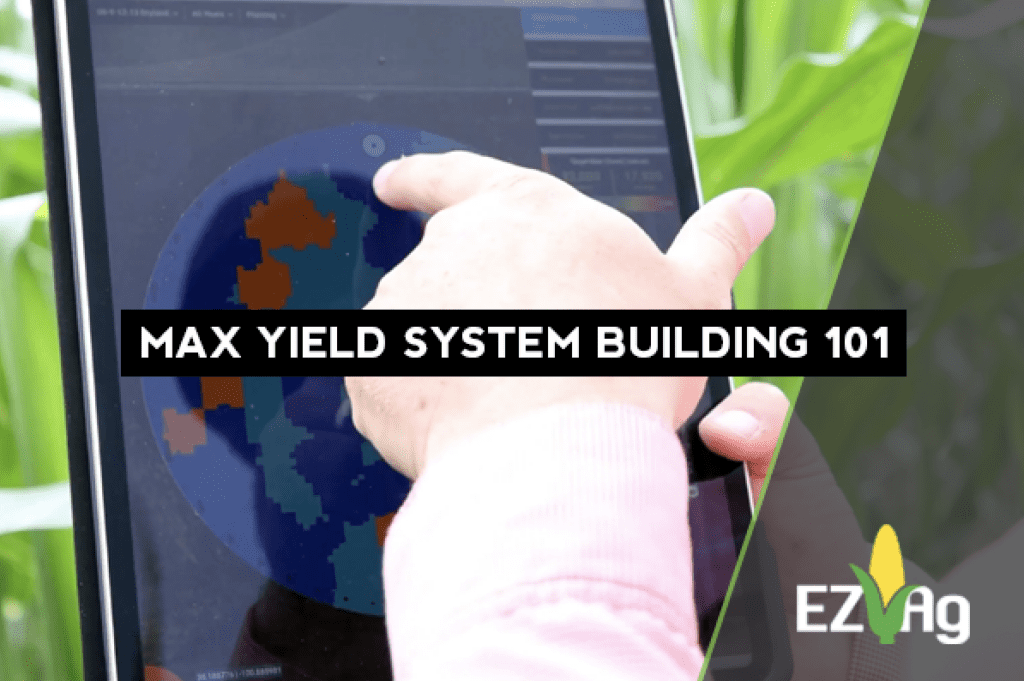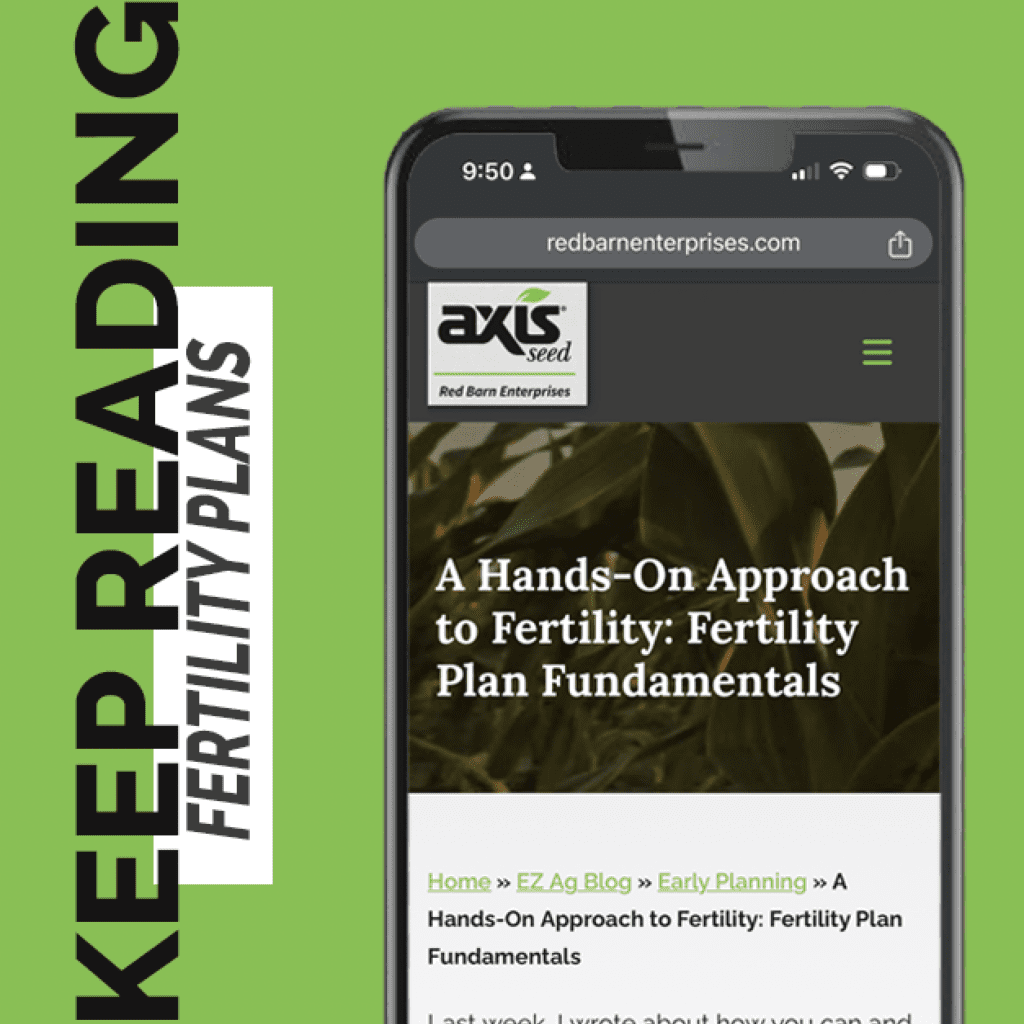When it comes to successfully farming your way out of tight margins a thorough plan ahead of the growing season is essential to empowering quick decisions when the unexpected comes your way. Enter the Max Yield System.
In last week’s post, I detailed the boots on the ground strategy the Red Barn team utilizes to help you create your very own Max Yield System (M.Y. System). In this week’s blog I’ll give you the tools to craft your own.

But before we dive into planning specifics, I want to share an overarching truth of this planning approach: You have to plan early. While it’s never too late to start a good habit, the key to ensuring you’re ready for the unexpected means you have that habit in place before the unexpected hits. The most effective way to accomplish this is by starting the process for next year the minute your planter stops rolling.
Why? Typically once planting stops your mind reels with hindsight on potential alterations for the following year. When you aren’t pressed to get the last bag into the ground before the rain, you can think clearly on what you’d do if the weather wasn’t standing in your way. And that’s the time to start building your plan for the following year.
So, on that note, let’s dive into the four primary components of building your very own M.Y. System plan:
The Crop Plan
The first part of building a plan for the future starts with identifying the crop you intend to plant the following year and getting to know that field’s history. You can learn a lot about a field’s history by pulling that field’s actual production history (APH) and a post-harvest soil sample or reviewing the general soil map data found online. Understanding the soil profile arms you with a baseline understanding of what is available for the crop you intend to plant, and it’s crucial data for building your input plan.
The Seed Plan

Once you have your future plans for a field in place, you build the seed plan. Naturally, hybrid selection comes to mind immediately but the seed plan also includes other critical inputs such as: planting timing, population expectations, and goals.
Evaluate if early or late planting is your goal, and then determine your population to create a more detailed plan on ideal hybrids and the quantities you need for your farm. A goal analysis paired with your APH and historical information from your crop plan will create the foundation for how aggressive your input plans will be. It seems counterproductive to be thinking about all of these aspects when building a seed plan but I challenge you to view this differently as these crucial pieces can help you better select ideal hybrids suited for your agronomic management style and ROI goals. I get it, I took a simple seed decision and made it more complicated but no one ever said farming your way out of tight margins would be easy.
The Crop Protection Plan
Now that you’ve established the crop you’d like to plant and you have a baseline understanding of that specific field’s needs, it’s time to start building the crop protection plan around this information.
When I partner with farmers on this plan, I like to remind them not to stress over being completely finalized on what you’re planting. If you’re 60% sure corn is your next crop, you build your plan around corn with some considerations that can add flexibility if the crop changes to milo. If you’re 90%+ certain it’s corn, go ahead and build the corn plan.
Also, crop protection planning is a year-round plan. It’s easy to focus on the CP products used when the crop is actively growing but don’t forget maintaining a weed-free field when there is no crop in the ground is essential to mitigating the pressure when crops are growing.
Weeds thrive when the only competition for lights, water and nutrients are themselves. In order to create a successful crop protection plan in-season, you cannot neglect weed control when your fields are bare. Don’t build your weed seed bank because you want to save some time and a few bucks on a post-harvest application, you will certainly have to make up for that mistake the following season with both time and money!
The Fertility Plan

Fertility planning is a complicated equation, which is why in your first step of planning you pulled soil samples and gained that baseline historical knowledge of the field. Use these insights to strategically invest in inputs that will not only enhance your soil profile but also the crop you intend to plant. Check out a previous blog on fertility plan fundamentals for a deep dive into the building blocks of a solid fertility plan.
In summary, to build your very own M.Y. System…
- First, establish a crop plan that outlines what crop will be planted next and some baseline historical data and soil information to inform your season’s investments.
- Next you develop a seed plan built around your agronomic management styles and goals.
- Then you move into input planning that keeps fields clean and enhances your soil profile while feeding the crop you plan to grow.
Flying by the seat of your pants is no longer a viable option for profitability in ag, and honestly even when commodity prices were great you still left profit on the table with this approach. The four components of a M.Y. System plan seem like a lot when broken out but they truly stair step into a cohesive approach that helps you handle the curve balls of the growing season with ease.
There is a practical use to this kind of planning beyond anticipating uncertainty as well. If you need to sit down with your financial institution your M.Y. System can be an outline for how you’re going to operate this next year and be profitable. Just think, you’ll have an 80-90% baked plan by August that allows you to have a high quality conversation regarding your entire cash flow system for the upcoming growing season. Talk about a, “two birds, one stone” approach!
If you’re interested in taking the steps to create your very own Max Yield System, give us a call! We’d be happy to sort through this planning process with you!

Leave a Reply